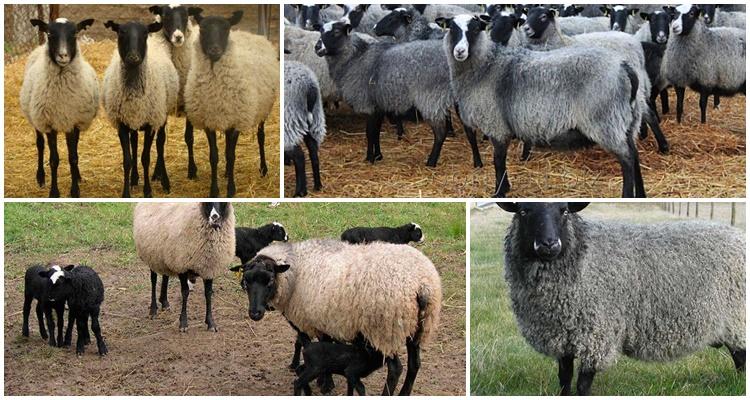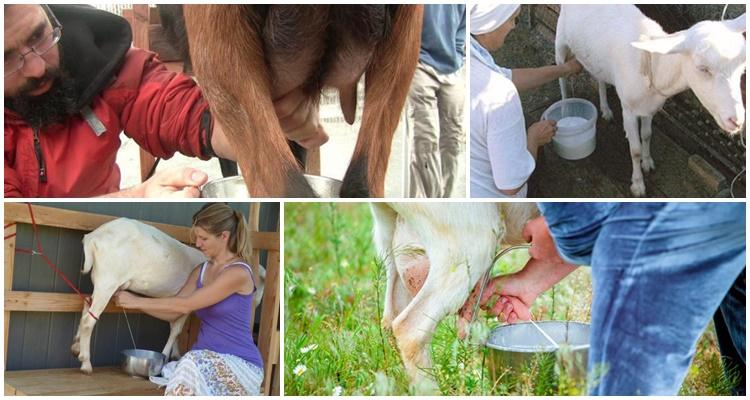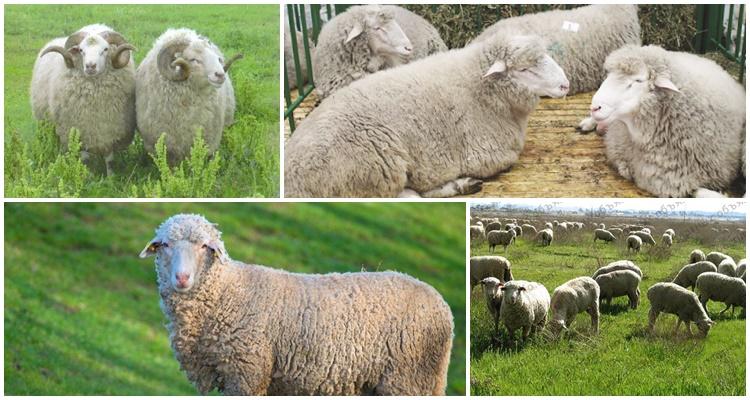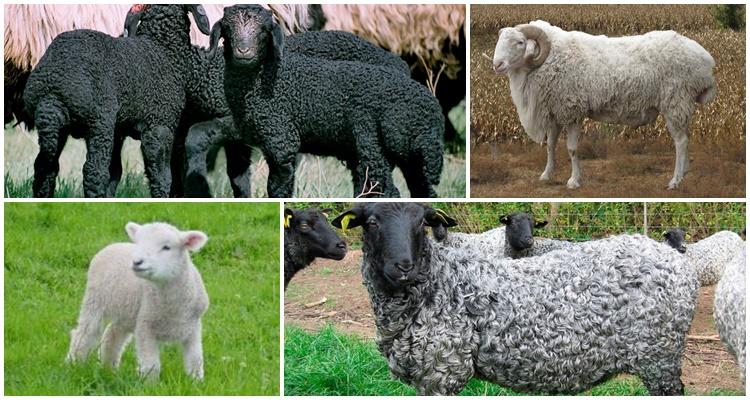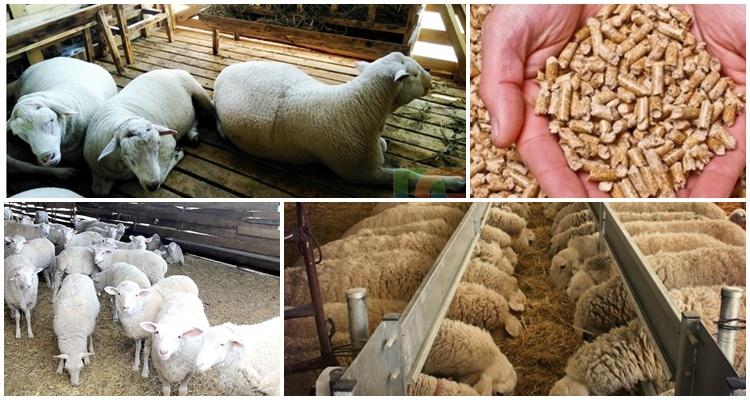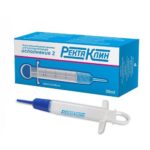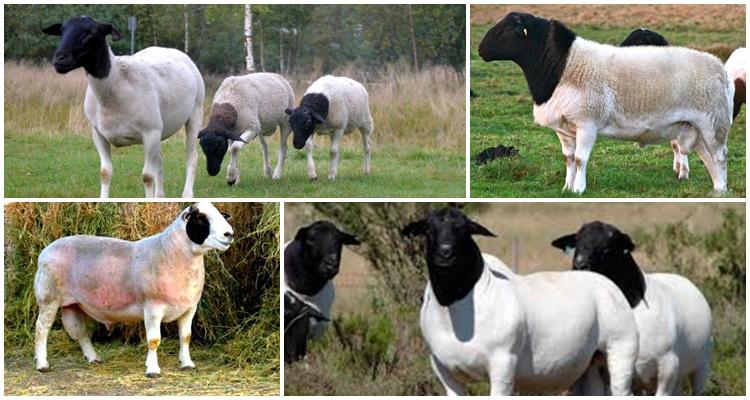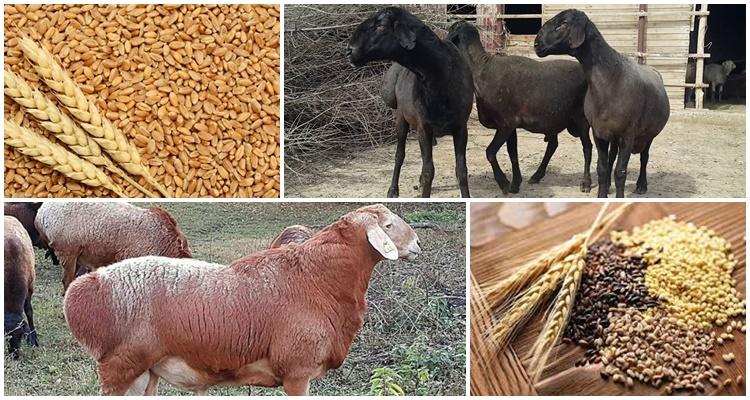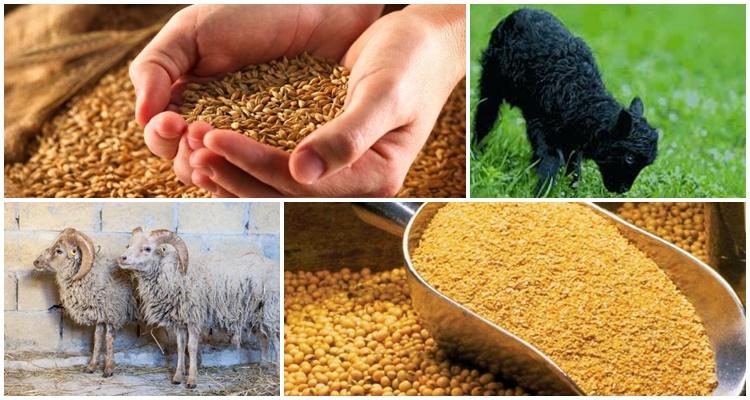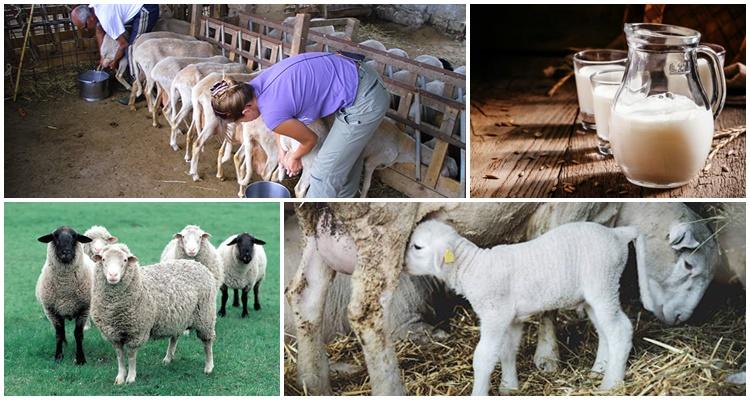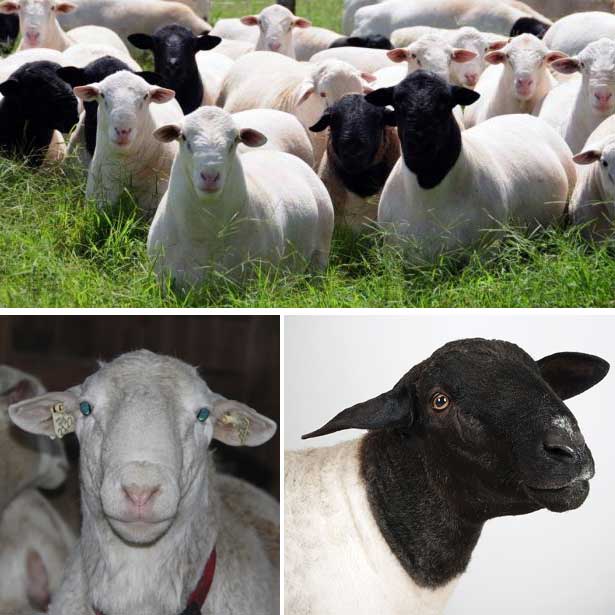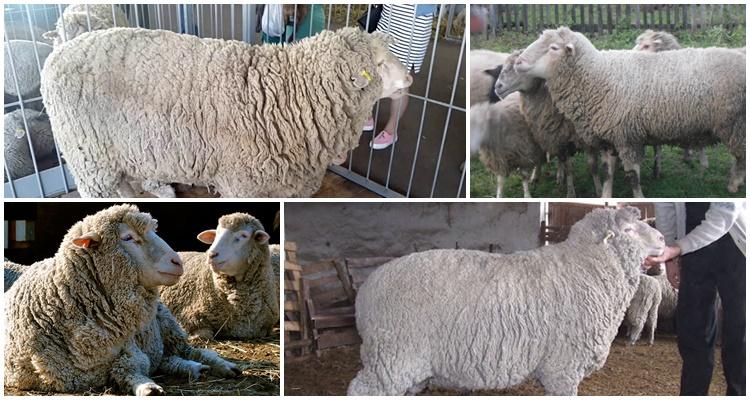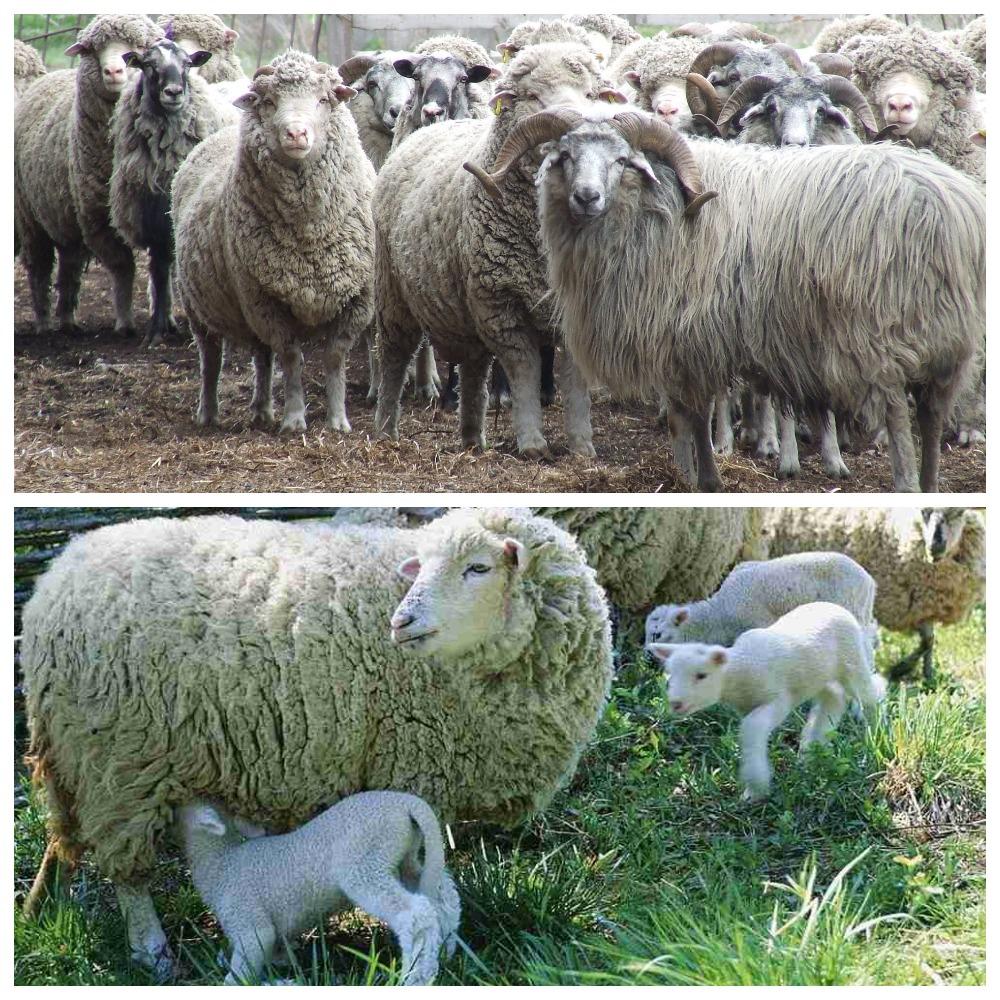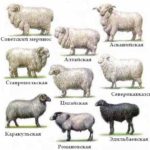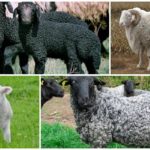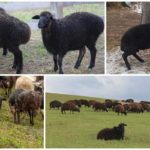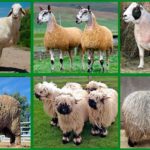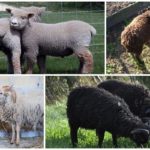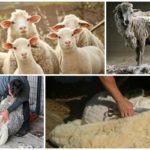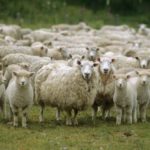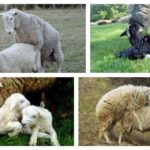They begin breeding sheep in order to obtain milk, meat, lard and valuable wool. The process of raising sheep involves taking into account the peculiarities of keeping and feeding. Traditions and certain conditions have formed in the field of sheep farming. If you adhere to the rules and follow the advice of experienced sheep breeders, you can raise healthy animals and make a good profit.
- Biological features
- Choosing a breed for breeding
- Meat
- Meat-fat
- Dairy
- Woolen
- Recommendations for beginners
- Preparing the premises
- Location requirements
- Installation of feeders and drinkers
- Necessary equipment and supplies
- Organization of a walking area
- Vet kit
- Rules for keeping and caring for animals
- Diet
- For adults
- For young animals
- Features of reproduction
- Diseases and their treatment
- Sheep farming business plan
- Expenses
- Profit and payback
- Selection of product sales channels
Biological features
Sheep provide wool, meat, milk, lard, and internal fat. After tanning, the skins are used as a decorative covering, as well as a material for making warm clothing and shoes. The characteristics of animals make it possible to plan the growing process while simultaneously receiving profit from the accompanying waste products of animals:
- sheep gain weight quickly;
- females are able to give birth twice a year;
- sheep are resistant to diseases and temperature changes.
Reference! Farmers claim that caring for artiodactyls is easier to organize than caring for cattle.
Choosing a breed for breeding
When choosing a breed, the priorities set in advance are taken into account. Growing for fattening involves short-term maintenance and an increased amount of protein feed. If sheep are kept to produce dairy products, then special breeds are chosen.
Meat
Animals of meat breeds are distinguished by their large size and high rate of weight gain. It is recommended to purchase the following breeds for meat:
- Romanovskaya;
- West Siberian;
- Kuibyshevskaya;
- Volgograd;
- dopper;
- soufflock.
Meat-fat
Meat-fat breeds are called fat-tailed. Animals tend to accumulate fat. The following breeds are recommended:
- Gissar;
- Kalmyk;
- edilbaevskaya.
Dairy
Dairy breeds are purchased to produce cheeses from sheep's milk. Breeds with narrow specifications are almost never used in home breeding, since cheese production has many nuances:
- zvartbles;
- East Frisian.
Woolen
One wool sheep produces up to 23 kilograms of wool annually. The following breeds are common:
- Karakul;
- Tushinskaya;
- Lincoln;
- Caucasian
Recommendations for beginners
For beginning breeders who plan to keep them at home, it will be easier to start with raising universal breeds:
- Romanov breed. Sheep are able to adapt to different conditions, they are fertile and reach large sizes. Males weigh about 100 kilograms, females - 50 kilograms.
- Gorky breed. Designed to produce meat, wool, milk. Males and females quickly gain weight and muscle mass. Animals are resistant to diseases.
- Kuibyshev breed. Suitable for grazing. Female sheep reach 70 kilograms and are capable of producing offspring of 3-4 lambs.
Homestead farming should be organized in such a way that it is convenient for both pets and owners. It is not recommended to keep even one ram or ewe in an apartment. Breeding several heads requires the construction of equipped premises. In this case, it is necessary to make special pens for sheep so that they can move freely within the fenced area.
Keeping 50-100 heads requires a special approach. Special premises are built for sheep, which must be equipped in accordance with basic requirements. Qualified personnel are required to maintain the farm.
Preparing the premises
The room for keeping sheep is called a sheepfold. It is built on a specially selected location that meets the basic requirements.
Location requirements
In sheep farming, the practice of using summer and winter premises is common. For the summer, a temporary shelter is built for the animals, and for the winter, the sheep are moved to a warm, heated room. This technique helps solve several problems.In the summer, in a temporary place, the animals receive sunlight, walk freely around the territory, and feed on grass. In winter, they live under artificial lighting at a comfortable air temperature. If you choose a place to build a temporary summer home or winter sheepfold, you should take into account that the room must be built on a flat surface, protected from dampness and drafts.
Installation of feeders and drinkers
An important condition for growing is the organization of nutrition. Animals must have access to food and drink throughout the day. Feeders and drinking bowls are installed at a height of 1-1.5 meters from the floor. To prevent food loss, special traps are installed under the feeders to collect leftovers. The simplest option for installing a feeder is to install a long rack installed along the stalls. For free but controlled access, the stall is surrounded by a special grille. It allows you to save food from spoilage and stick the sheep's head into the feed. Feeders and drinking bowls are made common or individual if animals are kept separately.
Reference! Many farms have established rules for feeding by the hour, but it is necessary to leave grass feed and water available around the clock.
Necessary equipment and supplies
Sheep breeders recommend purchasing special equipment in advance. For maintenance and care, you will need tools for harvesting and cleaning the sheep, as well as sheep clippers.
When slaughtering animals, you will need special equipment:
- knives for cutting carcasses;
- scissors for cutting wool;
- refrigeration chambers for storing meat.
To obtain milk from sheep, a milking machine is installed. This device helps milk the animal freely.The milking machine is a specially designed device with a ladder for lifting the animal, a platform and a head mount.
Organization of a walking area
Without exercise, sheep's muscles begin to weaken. Each sheep needs an area of 2 to 4 square meters for walking. To avoid the loss of an animal, the walking area must be fenced around the perimeter with a fence at least 1.5 meters high.
Vet kit
A veterinary first aid kit is prepared in case of unexpected illness in sheep.
A sheep farmer should have the following items in his arsenal:
- spray for treating skin damage;
- tar;
- antihistamines;
- enema;
- syringes;
- cotton wool;
- tourniquets.
Information! If serious damage is detected or a change in the animal’s behavior, you must call a veterinarian.
Rules for keeping and caring for animals
There are many ways to keep and raise sheep. The choice depends on the capabilities of the owners, as well as on the direction of the maintenance goals.
There are 3 main types of breeding:
- Pasture. The best option for a large farm, when the area allows the sheep to have pastures for walking.
- Stall. This is a method when sheep are cared for in sheepfolds; for grazing, it is necessary to escort the animals to the herd and pay for the services of a shepherd.
- Mixed. A method in which sheep are kept in a yard with other domestic animals and come into contact with birds or cattle.
Each method dictates its own rules. Sheep owners find unique solutions for their own farms that make care easier.
Diet
Catering is an important condition of maintenance. The elements that should be included in the diet of each animal can vary depending on the age and purpose of rearing.
For adults
Feeding adult sheep should be regular and balanced. The basis of the diet is plant foods, since sheep are herbivores. In summer, grasses occupy 80% of the total volume. Young tree branches are beneficial for animals.
In addition to herbs, the diet includes the following items:
- hay, vegetables, grains;
- succulent feed;
- meat and bone meal;
- chalk;
- salt.
Adult animals are fed with combined feeds. These are mixtures into which the vitamins and minerals needed by animals are pre-mixed.
You can determine the lack of elements by the behavior of the sheep:
- if they start chewing rags, tree bark or wool, this indicates a lack of calcium and phosphorus;
- involuntary muscle contraction indicates a lack of magnesium;
- cracked skin, the appearance of eczema, hair loss require the addition of zinc.
An excess of vitamins can be harmful to health, so a balanced diet for the animal is of great importance for novice and experienced sheep breeders.
Advice! Warm, clean water should be freely available to the sheep around the clock to compensate for natural fluid loss.
For young animals
The young stay with their mother during the first weeks. If the female cannot feed for some reason, then the young are offered cow's milk diluted with water, or infant formula prepared according to the rules.
Features of reproduction
One of the conditions for sheep farming is targeted breeding of sheep. Females reach reproductive age at 7 months. Males reach this age by 1.5 years. For mating, well-fed, calm animals that do not have any abnormalities are chosen.
Sheep breeding begins in the warm season. The female is brought to the ram for 5-7 hours, then taken away for proper rest.One ram can cover up to 10-15 sheep, but experienced breeders advise having two rams on the farm for this. Breeding tips:
- the period favorable for mating lasts from late July to early October;
- During this period, male animals are kept in a dark room, away from sheep, and released for directed shrinkage;
- The cycle in females lasts from 14 to 19 days;
- pregnancy can be diagnosed by laboratory methods or determined by changes in behavior;
- A sheep's pregnancy lasts about 5 months.
A female may have 2-3 lambs. It is better to keep lambs in the first weeks of life next to the female. An animal can only provide adequate nutrition to two lambs, so if there is a third or fourth lamb, additional feeding must be organized.
Diseases and their treatment
The health of the livestock is one of the priority conditions for keeping. It is necessary to monitor the condition of animals.
Dangerous signs of the disease include the following symptoms:
- a sharp increase in body temperature;
- causeless twitching of the ears;
- lack of appetite;
- development of conjunctivitis;
- weight loss;
- lameness;
- cough.
Common sheep diseases can be cured if prompt action is taken.
| Disease | How to treat | Signs |
| Pneumonia | A course of antibiotics is prescribed, plenty of fluids are given, and the sheep is left in an individual pen until the condition improves. | Loss of appetite, cough, sudden change in body temperature. |
| Pulp inflammation | The rot is cut off and the hooves are treated with special compounds. | Bacteria enter the hollow spaces on the hooves and cause rot. The condition causes lameness. |
| Skeletal dystrophy | A course of vitamins is prescribed, the diet is reviewed, and an increased amount of vitamin E is added. | Weight loss, apathy, weakness, muscle atrophy. |
| Rumen flatulence | To alleviate the animal’s condition, a gas tube is inserted, the diet is reviewed, and fermented milk products are introduced for a while. | Violation of the diet provokes flatulence, bloating, loss of appetite, and weight loss. |
| Poisoning | Wash with salts and vegetable oil. | Vomiting, weakness, loss of coordination. |
| Bezoar disease | They are treated with vitamin supplements and injections of special medications. | Eating their own fur begins when animals lack certain substances in their diet. |
The appearance of lice on the body of sheep brings a lot of inconvenience. Animals begin to itch and behave restlessly. If sheep have lice, it is necessary to wash them with special means. Specially shorn sheep are treated with Diazinon solution. The next treatment is carried out after 2 weeks.
Sheep farming business plan
Before you start raising sheep, you need to make a clear plan that takes into account the necessary costs. Product sales are an important component of the plan.
Expenses
The initial capital for the purchase of sheep is planned taking into account the costs of maintaining the site. Sheep need a spacious area. If it is owned, then they only plan to pay utility costs. A separate line of expenses is rent or purchase of land. Prices will be different for each region of the country.
The financial plan for breeding 80-100 animals includes the following items:
- costs for the necessary equipment (laptop, printer, cash register, refrigerators, commercial equipment) – 440 thousand rubles;
- investments for opening an individual entrepreneur (rent, purchase of sheep, construction of premises) – 1.5 million rubles;
- staff salaries.
Reference! Risk factors at each stage may be the risk of absence of a consumer of the product, as well as the risk of loss of the product due to unpredictable conditions.
Profit and payback
The payback of the business plan is calculated for a period of 19 months. It is planned that the losses will be fully recouped within the 4th month of the farm’s existence. The investment must be returned with profit from the sale of products: milk, meat, wool. One of the conditions for recoupment is the sale of raised sheep. At the same time, the replacement of sold heads must be justified by raising young animals from females.
Selection of product sales channels
The sales market must be taken care of in advance. An agreement with those who will purchase the products is an important part of the sales plan.
Methods of selling goods:
- slaughter of raised sheep and sale one at a time through your own retail outlet;
- sale of reared young animals without exception;
- cutting meat, selling to retail chains and intermediaries;
- sale of wool, milk for cheese production.
Meat can be sold through retail chains, cafes or restaurants. Good income comes from self-sales. When working with intermediaries, it is recommended to use special marketing techniques. Provide special discounts for concluding long-term contracts. When planning implementation, it is necessary to consider the principles of product promotion: advertising in the media, distribution of leaflets.

